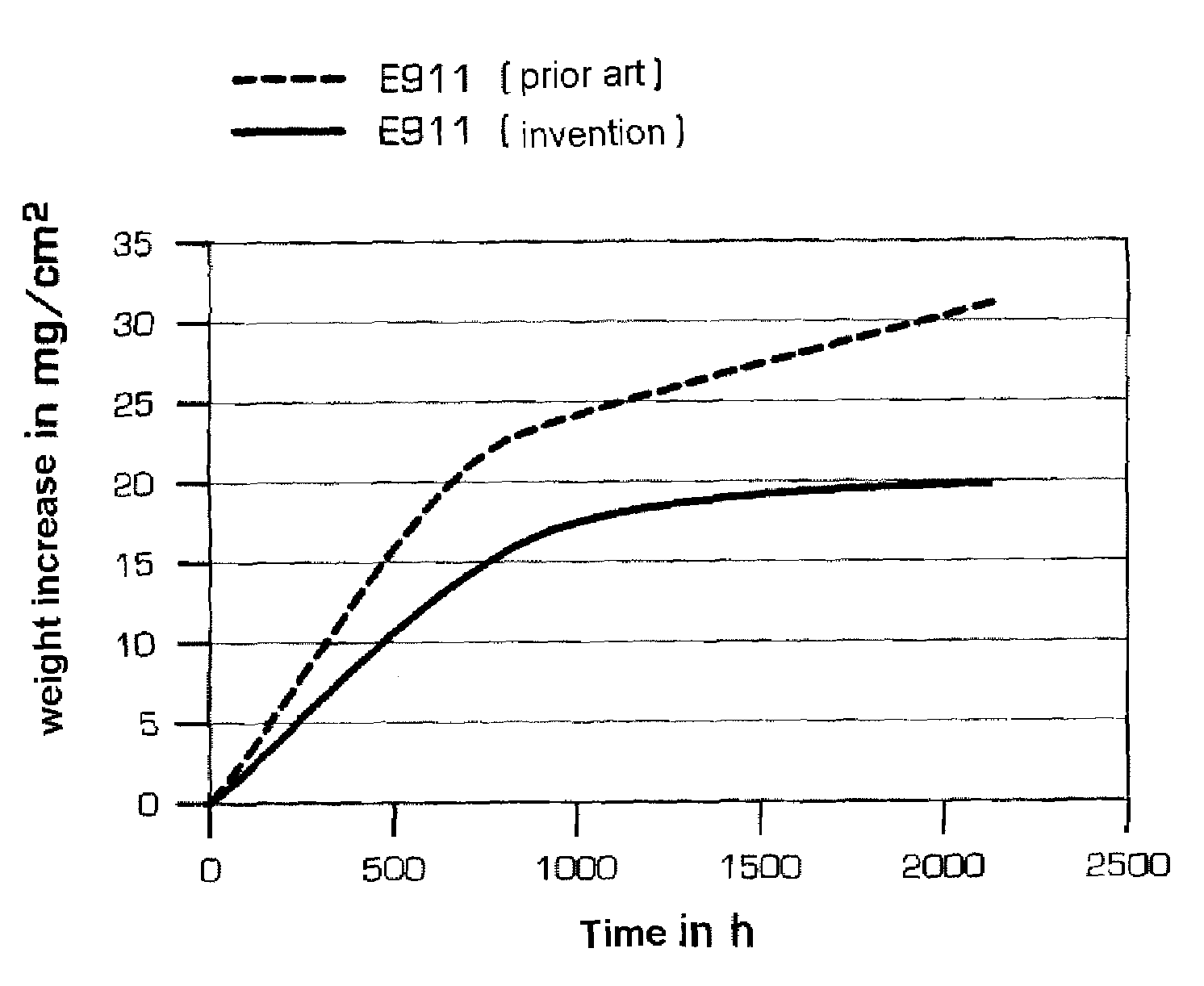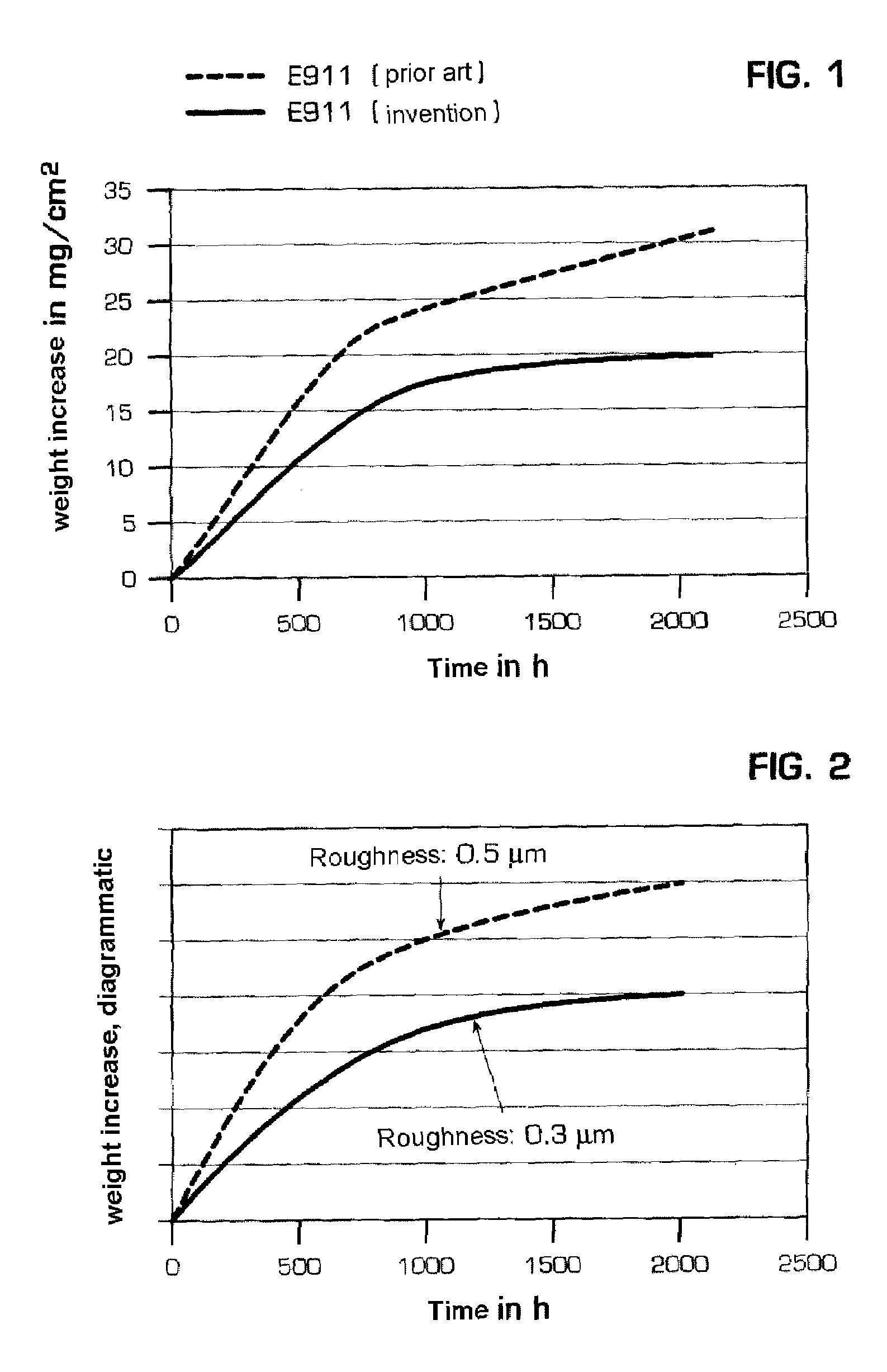Method for the surface treatment of ferritic/martensitic 9-12% Cr steel
a technology of ferritic/martensitic steel and surface treatment, applied in the field of material technology, can solve the problems of inability to meet the needs of customers, etc., and achieve the effects of improving oxidation resistance, high resistance to oxidation and solid erosion, and cost-effectiveness
- Summary
- Abstract
- Description
- Claims
- Application Information
AI Technical Summary
Benefits of technology
Problems solved by technology
Method used
Image
Examples
Embodiment Construction
[0020]Methods according to the present invention are explained in more detail below with reference to an exemplary embodiment and to FIGS. 1 to 2.
[0021]A ferritic 9% Cr steel (E911) with the following chemical composition (values in % by weight)
[0022]0.11 C
[0023]0.35 Mn
[0024]0.2 Si
[0025]9.1 Cr
[0026]1.01 Mn
[0027]1.00 W
[0028]0.23 V
[0029]0.07 N
[0030]0.07 Nb
[0031]the remainder iron and unavoidable impurities
[0032]was treated according to the invention.
[0033]In a first step, in this case, the abovementioned steel was shot-peened with steel particles (carbon steel with a C content of 0.1%), the particles having a grain size of 200-450 μm. The process parameters were:
[0034]Pressure: 6 bar
[0035]Time: 4-5 min.
[0036]Angle (nozzle to the surface): 80-85°
[0037]The steel thus treated was subsequently, in a second step, shot-peened with glass particles (grain size: 300-400 μm). The process parameters in this second step were:
[0038]Pressure: 2-2.5 bar
[0039]Time: 4 min.
[0040]Angle (nozzle to surfac...
PUM
| Property | Measurement | Unit |
|---|---|---|
| temperatures | aaaaa | aaaaa |
| roughness | aaaaa | aaaaa |
| roughness | aaaaa | aaaaa |
Abstract
Description
Claims
Application Information
 Login to View More
Login to View More - R&D
- Intellectual Property
- Life Sciences
- Materials
- Tech Scout
- Unparalleled Data Quality
- Higher Quality Content
- 60% Fewer Hallucinations
Browse by: Latest US Patents, China's latest patents, Technical Efficacy Thesaurus, Application Domain, Technology Topic, Popular Technical Reports.
© 2025 PatSnap. All rights reserved.Legal|Privacy policy|Modern Slavery Act Transparency Statement|Sitemap|About US| Contact US: help@patsnap.com


